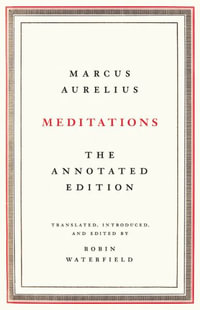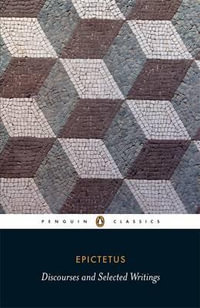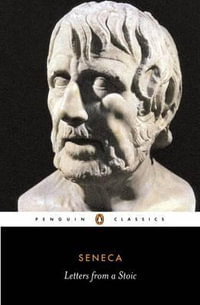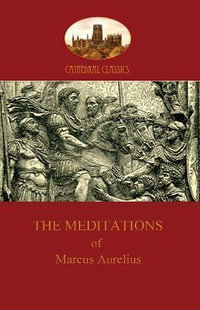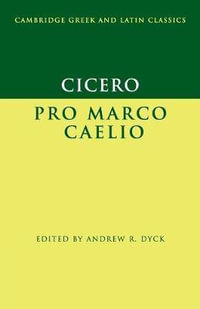x0 Entering the Realm of Darkness.- One. Elementary Synta.- x1 Elementary forms.- x2 Modal opposition.- 2.1 Necessity- and possibility-forms.- 2.2 Necessity- and contingency-forms.- x3 Transformation rules: Substitution, Permutation, Reductio and Cut.- 3.1 Substitution.- 3.2 Permutation.- 3.3 Indirect Reduction.- 3.4 Cut.- x4 Transformation rules: Contraction, Ecthesis.- 4.1 Contraction.- 4.2 Ecthesis.- x5 Transformation rules: modal reductio.- Two. Axioms.- x6 Axioms: X and L axioms.- 6.1 X axioms.- 6.2 L axioms.- 6.2.1 Pure L axioms.- 6.2.2 L-X axioms.- x7 Axioms: Q axioms.- 7.1 Pure Q axioms.- 7.2 Q-X axioms.- 7.3 Q-L axioms.- x8 Axioms: Q', M and X' axioms.- 8.1 Q' axioms.- 8.2 M axioms.- 8.3 'Unqualified' assertoric axioms.- Three. Theses.- x9 Necessity moods.- 9.1 Pure L theses.- 9.2 L-X theses.- x10 Unampliated contingency moods.- 10.1 Q-X theses.- 10.2 Q-L theses.- 10.2.1 First Figure.- 10.2.2 Second Figure.- 10.2.3 Third Figure.- x11 Ampliated contingency moods.- x12 Possibility moods.- 12.1 First Figure.- 12.2 Second Figure.- 12.3 Third Figure.- x13 'Unqualified'moods.- 13.1 First Figure.- 13.2 Second Figure.- 13.3 Third Figure.- Four. Rejections.- x14 Necessity moods.- 14.1 Rejected L-X moods: First Figure.- 14.2 Rejected L-X moods: Second Figure.- 14.3 Rejected L-X moods: Third Figure.- x15 Unampliated contingency moods.- 15.1 Rejected 1-premissed Q moods.- 15.2 Rejected 2-premissed Q-X moods.- 15.2.1 Rejected Q-X moods: First Figure.- 15.2.2 Rejected Q-X moods: Second Figure.- 15.2.3 Rejected Q-X moods: Third Figure.- 15.3 Rejected Q-L moods.- 15.3.1 Rejected Q-L moods: First Figure.- 15.3.2 Rejected Q-L moods: Second Figure.- 15.3.3 Rejected Q-L moods: Third Figure.- x16 Ampliated contingency moods.- 16.1 Rejected Q' moods: First Figure.- 16.2 Rejected Q' moods: Second Figure.- 16.3 Rejected Q' moods: Third Figure.- x17 Possibility and 'unqualified' moods.- Five. Flaws in the Fabric.- x18 Incidental mistakes.- 18.1 Barbara XLL and the Hintikka Formulae.- 18.2 Datisi XLL, Disamis LXL and necessarily awake bipeds.- 18.3 QiLo-1, QoLo-1 and necessarily non-white men.- 18.4 QaLaLo-2, QeLaLo-2 and negative conclusions from affirmative premisses.- 18.5 QaLe-3, QeLe-3 and necessarily sleeping horses.- 18.6 Barbara X'QM and 'unqualified' assertorics.- x19 Substantial mistakes.- 19.1 QaLaXe-2 and negative conclusions from affirmative premises.- 19.2 Barbara XQM and ephemeral contingencies.- x20 Inconsistencies.- 20.1 Baroco XLL, Bocardo LXL and ecthesis.- 20.2 Q-opposition and Qi-conversion.- Six. System AL.- x21 Assertoric forms.- x22 Necessity forms.- 22.1 Formal semantics.- 22.2 The Sun set Theorem.- 22.3 Validity of the axioms.- 22.4 Invalidity of the axiomatic rejections.- 22.5 Corollaries.- x23 Adding C,K,U and T.- x24 Reduction to assertoric syllogistic.- x25 Alternative de re approaches: base.- 25.1 Existence assumptions.- 25.2 Sun set assumptions.- x26 Alternative de re approaches: superstructure.- 26.1 Superstructure A.- 26.2 Superstructure AA.- 26.3 Superstructure C.- 26.4 Superstructure CC.- x27 Alternative approaches: de dicto theories.- 27.1 Pure de dicto theories.- 27.2 Mixed de dicto/de re theories.- Seven. Systems AQ and AQ'.- x28 Unampliated contingency-forms.- 28.1 Formal semantics.- 28.2 Validity of the axioms.- 28.3 Invalidity of the axiomatic rejections.- 28.3.1 First Figure.- 28.3.2 Second Figure.- 28.3.3 Third Figure.- 28.4 Corollaries.- x29 Ampliated contingency-forms.- 29.1 Formal semantics.- 29.2 Validity of the axioms.- 29.3 Invalidity of the axiomatic rejections.- 29.4 Corollaries.- x30 The relation of ampliated to unampliated systems.- x31 Reduction to assertoric syllogistic.- x32 Alternative de re approaches.- 32.1 Superstructure A.- 32.2 Superstructure AA.- 32.3 Superstructure C.- 32.4 Superstructure CC.- 32.5 Comparing superstructures.- x33 Alternative approaches: de dicto theories.- Eight. System AX'.- x34 Unqualified assertorics.- x35 System AX'.- x36 Reduction to assertoric syllogistic.- x37 A reprieve for modal reductio.- Nine. Singular Modal Syllogistic.- x38 System AEL5.- 38.1 Syntactic base.- 38.2 Formal semantics.- 38.3 Provability of AL's base.- x39 Systems AEQ5 and AEQ'5.- x40 Alternative de re approaches.- 40.1 A-style singular modal syllogistic.- 40.2 AA-style singular modal syllogistic.- 40.3 C-style singular modal syllogistic.- 40.4 CC-style singular modal syllogistic.- x41 Reduction to assertoric syllogistic.- 41.1 System EQ0.- 41.2 Alternative superstructures.- 41.3 Alternative bases.- Ten. Essentialism.- x42 Varieties of essentialism.- 42.1 Essentialism.- 42.2 Examples of essentialist theory.- 42.3 Aristotelian essentialism: generalities.- 42.4 Aristotelian essentialism: specifics.- x43 The essentialism of the modal syllogistic.- 43.1 A metaphysical interpretation of the modal syllogistic.- 43.2 Interpreting the base.- 43.3 Interpreting the superstructure.- 43.3.1 La-propositions.- 43.3.2 Le-propositions.- 43.3.3 Li-propositions.- 43.3.4 Lo-propositiions.- 43.3.5 Q-propositions.- x44 Aristotle's static essentialism.- x45 Aristotle's dynamic essentialism.- x46 The metaphysics of unqualified assertorics.- x47 Aristotelian vs. Platonic essentialism.- x48 Conclusions.- References and Indexes.- References.- Index locorum.- Index of axioms.- Index of rules.- Index of systems.- General index.

